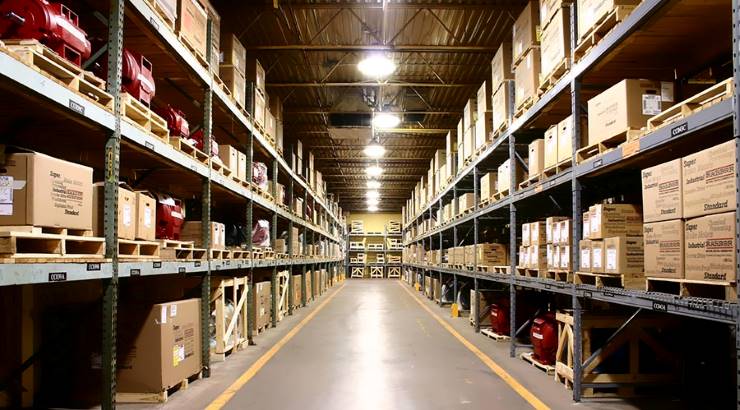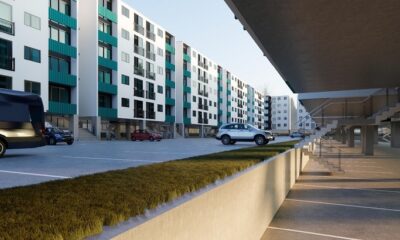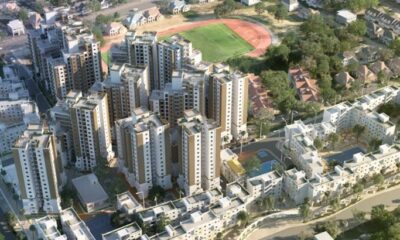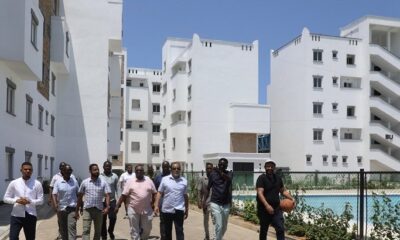Residential Projects
Forget homes, Kenyan developers have found a new money-maker
Investors are increasingly setting up top-end warehouses to meet the rising demand for such facilities.

A deficiency of modern warehouse and industrial space has seen developers betting on large tracts of vacant land across Nairobi for new development, in a move that is likely to further fuel the on-going construction boom.
Although the industrial market segment is still in its infancy stage, developers are increasingly setting up top-end warehouses to meet the rising demand for such facilities from logistics firms venturing into Kenya and the East African region.
In 2015, for example, the Nairobi County government issued the highest levels of approvals for multi-unit, developer-led industrial/warehouse developments, at 280,000 square metres, majority of which are set to be completed this year.
According to the 2017 edition of the annual Knight Frank Africa report, rents for prime industrial space have gone up by 11.9 per cent in two years to about Sh486 per square metre, from about Sh434 in 2014.
This growth has been attributed to rising demand from companies seeking to set up new industries in Kenya.
“Industrial rents have risen as a result of a move by developers into the high-end logistics market,” Knight Frank managing director Ben Woodhams said during the release of the report last month.
The Nairobi industrial market is currently absorbing an estimated Sh3 billion investments annually – exclusive of land costs – compared to Sh20 billion that is invested into the commercial office sector.
The slow investment in the market segment has led to a chronic shortage of A-grade quality warehouses in the wake of high demand for such facilities from international retailers and consumer goods suppliers seeking to expand their regional operations and enhance distribution networks and supply chains.
According to commercial property services firm Broll Property Group, which manages several high-end developments in Nairobi, the shortage has presented new opportunities for development in the country – an indication that the market segment could be the next frontier for growth.
Modern clientele
Currently, Embakasi is the main hub for warehouse for lease, while the Industrial Area has the bulk of owner-occupied warehouses.
Most of these facilities are old and cannot meet the quality demanded by the modern clientele. In addition, the perennial traffic congestion in the city has discouraged a majority of clients from taking up space in the city.
“Nairobi lacks adequate supply of prime logistics space. The existing space in Industrial Area is congested, old and does not feature latest technology,” Mr Woodhams said in a past interview.
Luckily, the on-going infrastructure development across Nairobi and its environs have connected the city to satellite towns – a situation that has created new opportunities outside Nairobi County.
In 2015, for example, warehouse uptake was as high in Machakos and Kiambu as in Nairobi, with land prices being significantly lower in the counties compared to those of the capital city.
Some of the high-end logistic warehouses currently underway include the Tatu Industrial and Logistics Park on Northern Bypass, Nairobi Gateway Logistics Park on Mombasa Road, Infinity Industrial Park and Northlands Commercial Park both located on the Eastern Bypass and Tilisi on the Nairobi-Nakuru highway.
“We are seeing new developments come up outside Nairobi to support the space. Tatu City, for instance, features a huge industrial space and has already attracted huge players like Dormans and Chandaria Industries,” Mr Woodhams said.
Mass storage of goods
Located in Ruiru, some 24 kilometres from Nairobi, Tatu City has attracted about 15 companies in its proposed city industrial park. Bidco Oil Refineries, for example, has acquired 78 acres of industrial space where it will set up a factory, while Unilever East Africa has acquired 70 acres within the development.
On its part, Tilisi – a mixed-use development comprising 17 five-acre warehouses and packaging centres – is targeting freight forwarding firms and owners of online shops for mass storage of goods.
Modern logistics hubs are being set up in line with the high-tech specifications and demands of refined international tenants. They are completely different from the empty “go-downs” that have for years supported logistics businesses.
The high-end logistics facilities feature, among other things, computerised wrapping systems, computerised storage and retrieval processes, and spacious storage rooms up to 18 metres high.
According to the 2016 Logistics Performance Index (LPI) — a World Bank survey of operators providing feedback on the logistics ‘friendliness’ of countries, Kenya is second in sub-Saharan Africa, after South Africa, with a score of 3.33 out of 5.0 Worldwide. The East African country is now graded 42nd in the LPI out of a total of 160 countries.












